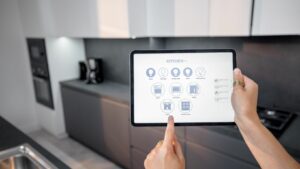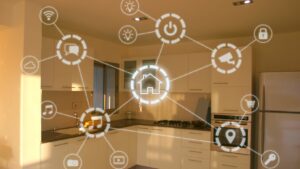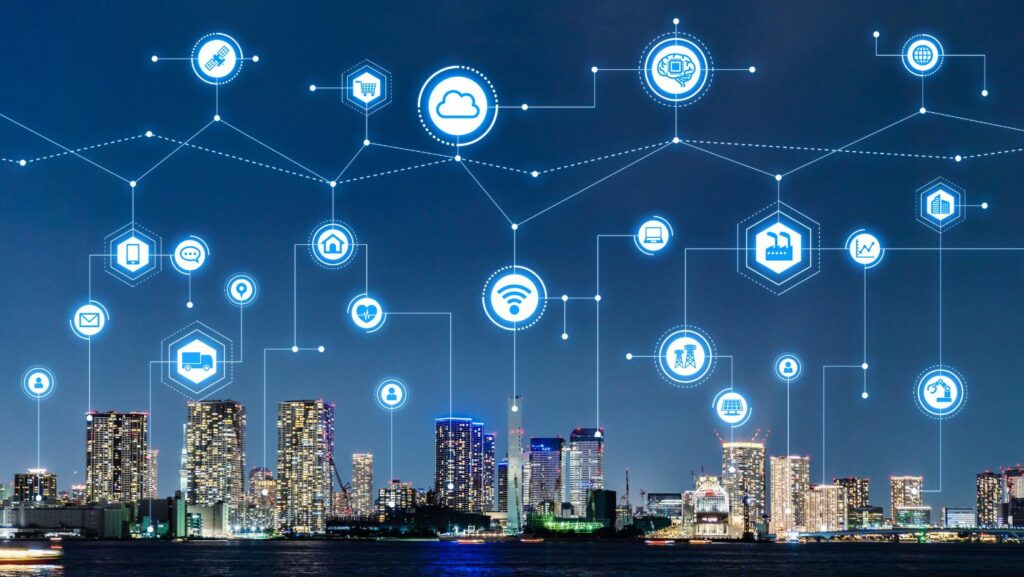Green Smart Living
- Definition of Green Smart Living: It merges eco-friendly practices with modern technology to create sustainable and efficient lifestyles that minimize environmental impact.
- Resource Efficiency Focus: Emphasizes the efficient use of resources such as energy, water, and materials to reduce waste and lower costs.

- Economic and Environmental Benefits: Green smart living not only decreases utility bills through energy-efficient practices but also contributes to lower greenhouse gas emissions and improved air quality.
- Key Components: Includes sustainable home design, energy efficiency, and integration of smart technologies, all working together to enhance personal well-being and environmental health.
- Challenges to Adoption: Initial costs and lack of awareness can hinder the transition to green smart living, highlighting the need for financial incentives and educational initiatives.
- Long-term Impact: Adopting green smart living practices fosters a healthier lifestyle and promotes environmental stewardship, resulting in a positive impact for individuals and the planet.
In a world increasingly aware of environmental challenges, green smart living emerges as a beacon of hope. It combines eco-friendly practices with innovative technology to create sustainable lifestyles that benefit both individuals and the planet. This approach not only reduces carbon footprints but also enhances the quality of life through smarter resource management.
From energy-efficient appliances to sustainable home designs, green smart living offers practical solutions for those looking to make a positive impact. It empowers individuals to embrace a lifestyle that prioritizes sustainability while enjoying the conveniences of modern technology. As the movement gains momentum, it’s time to explore how adopting these principles can lead to a healthier, more sustainable future for everyone.
What Is Green Smart Living?
Green smart living combines eco-friendly practices with cutting-edge technology to create sustainable lifestyles. This approach aims to minimize environmental impact while enhancing individual well-being.
- Resource Management: It focuses on efficient use of resources, including water, energy, and materials, to reduce waste and lower costs.
- Energy Efficiency: Smart appliances and technologies, such as smart thermostats and LED lighting, significantly decrease energy consumption without compromising comfort.
- Sustainable Design: Features like solar panels, green roofs, and smart home systems facilitate the integration of sustainability into daily living.
- Waste Reduction: Implementing recycling systems and composting practices helps divert waste from landfills, promoting a circular economy.
- Eco-Friendly Transportation: Prioritizing public transit, electric vehicles, and biking contributes to lower greenhouse gas emissions and improved air quality.
Green smart living promotes both personal health and environmental stewardship by encouraging behaviors and technologies that support a sustainable future. This results in enhanced quality of life alongside a reduced carbon footprint.
Benefits of Green Smart Living
Green smart living provides numerous benefits, significantly impacting both individuals and the environment. The integration of sustainable practices with innovative technology leads to enhanced quality of life.
Environmental Impact
Green smart living reduces carbon footprints, promoting environmental sustainability. Utilizing energy-efficient appliances minimizes energy consumption, resulting in decreased greenhouse gas emissions. Implementing smart resource management fosters conservation of water and electricity, directly benefiting ecosystems. The use of renewable energy sources, such as solar panels, decreases reliance on fossil fuels, contributing to cleaner air and lower pollution levels. Individuals engaging in composting and recycling practices further mitigate waste, protecting natural habitats and supporting biodiversity.
Economic Advantages
Green smart living offers substantial economic benefits. Energy-efficient homes reduce utility bills, allowing individuals to save money over time. Smart appliances enable optimized energy usage, decreasing overall household expenditures. Moreover, investing in eco-friendly transportation options, like electric vehicles, leads to lower fuel and maintenance costs. Sustainable design features, such as green roofs, enhance property values and attract buyers interested in energy-efficient solutions. Overall, adopting green smart living practices creates financial savings while fostering long-term economic resilience.
Key Components of Green Smart Living
Green smart living encompasses several key components that together foster sustainable lifestyles. Each component works synergistically to enhance both environmental health and personal well-being.
Sustainable Home Design
Sustainable home design emphasizes using eco-friendly materials and energy-efficient layouts. Features like passive solar design maximize natural light and reduce reliance on artificial lighting. Choosing sustainable materials—such as bamboo flooring or recycled metal roofing—minimizes environmental impact. Incorporating green roofs and rainwater harvesting systems enhances biodiversity and conserves water. These design strategies reduce carbon emissions and lower utility costs, fostering a healthier living environment.
Energy Efficiency
Energy efficiency focuses on minimizing energy consumption through smarter choices. Energy-efficient appliances—like ENERGY STAR-rated refrigerators and washing machines—use less electricity, resulting in lower energy bills. Proper insulation and high-performance windows reduce heating and cooling demands. Programmable thermostats automatically adjust temperatures, optimizing energy use based on occupancy patterns. Implementing these measures significantly reduces greenhouse gas emissions, supporting a more sustainable future.
Smart Technology Integration
Smart technology integration drives efficiency and sustainability in daily routines. Home automation systems allow for real-time energy monitoring and control over various appliances. Smart lighting systems utilize motion sensors and timers to ensure lights turn off when not needed. Electric vehicle charging stations at home promote the use of greener transportation options, reducing reliance on fossil fuels. This technology not only enhances convenience but also contributes to energy conservation and environmental stewardship.
Challenges in Adopting Green Smart Living
Adopting green smart living presents various challenges that individuals and communities may encounter. Understanding these obstacles helps promote effective strategies for a more sustainable lifestyle.
Initial Costs
 Initial costs often hinder the adoption of green smart living practices. Homeowners frequently face higher upfront expenses when investing in energy-efficient appliances, solar panel installations, or sustainable building materials. Although these investments yield long-term savings through reduced utility bills, the barrier of initial financial outlay remains significant. For instance, installing solar panels can range from $15,000 to $25,000, depending on the system size and location. Many individuals require financial incentives or government subsidies to ease the burden of these costs.
Initial costs often hinder the adoption of green smart living practices. Homeowners frequently face higher upfront expenses when investing in energy-efficient appliances, solar panel installations, or sustainable building materials. Although these investments yield long-term savings through reduced utility bills, the barrier of initial financial outlay remains significant. For instance, installing solar panels can range from $15,000 to $25,000, depending on the system size and location. Many individuals require financial incentives or government subsidies to ease the burden of these costs.
Awareness and Education
Awareness and education play crucial roles in the adoption of green smart living. Many individuals lack knowledge about the benefits and techniques associated with sustainable practices. Misconceptions about the efficiency of green technologies can also undermine enthusiasm. For instance, some may believe that energy-efficient homes compromise comfort, despite evidence demonstrating improved indoor environments. Educational initiatives and community outreach programs focused on sustainability can bridge this knowledge gap, guiding individuals toward informed decisions about their lifestyles.
Sustainable Future
Embracing green smart living is more than a trend; it’s a vital step toward a sustainable future. By integrating eco-friendly practices with innovative technology, individuals can significantly reduce their carbon footprints while enjoying modern conveniences.
The benefits extend beyond personal well-being to encompass environmental health and economic savings. With the right tools and knowledge, anyone can make impactful changes that promote a healthier planet.
As awareness grows and more resources become available, the transition to a greener lifestyle is within reach. Each small effort contributes to a larger movement that fosters sustainability and resilience for generations to come.



